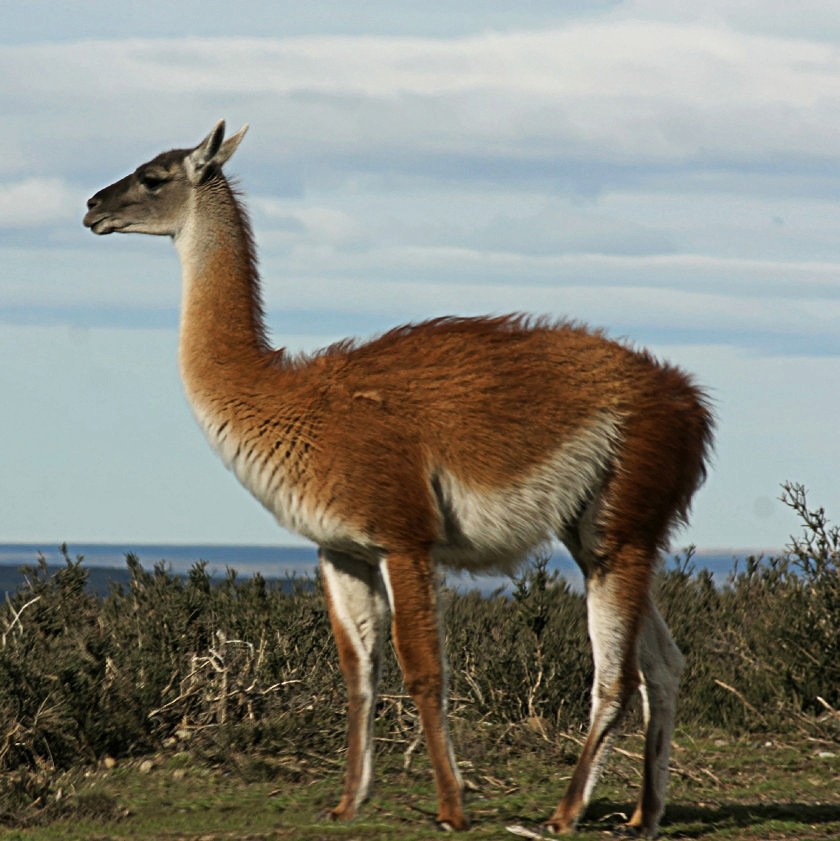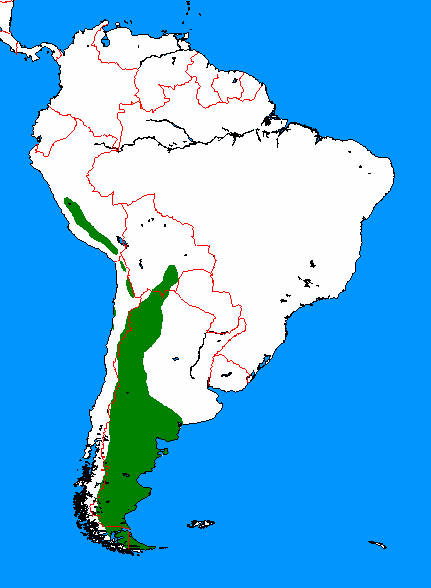
Guanaco
 The guanaco ( Lama guanicoe) is a camelid native to South America, closely related to the llama. Guanacos are one of two wild South American camelids; the other species is the vicuña, which lives at higher elevations.
The guanaco ( Lama guanicoe) is a camelid native to South America, closely related to the llama. Guanacos are one of two wild South American camelids; the other species is the vicuña, which lives at higher elevations.
Guanacos have thick skin on their necks, a trait also found in their domestic counterparts, the llama, and their relatives, the wild vicuña and domesticated alpaca. This protects their necks from predator attacks. Bolivians use the neck skin of these animals to make shoes, flattening and pounding the skin to be used for the soles. In Chile, hunting is allowed only in Tierra del Fuego, where the only population not classified as endangered in the country resides. Between 2007 and 2012, 13,200 guanacos were legally hunted in Tierra del Fuego.
While camelids are not related to ruminants, they still have a similar digestion where food is first swallowed to the forestomach.
Guanacos spend much of their lives at high altitude, and litre for litre they have roughly 4 times the red blood cells, allowing them to still get enough oxygen in these low oxygen altitudes.
They are farmed for their fur, which is thick and soft.
Subspecies include:
- Lama guanicoe guanicoe
- Lama guanicoe cacsilensis
- Lama guanicoe voglii
- Lama guanicoe huanacus










